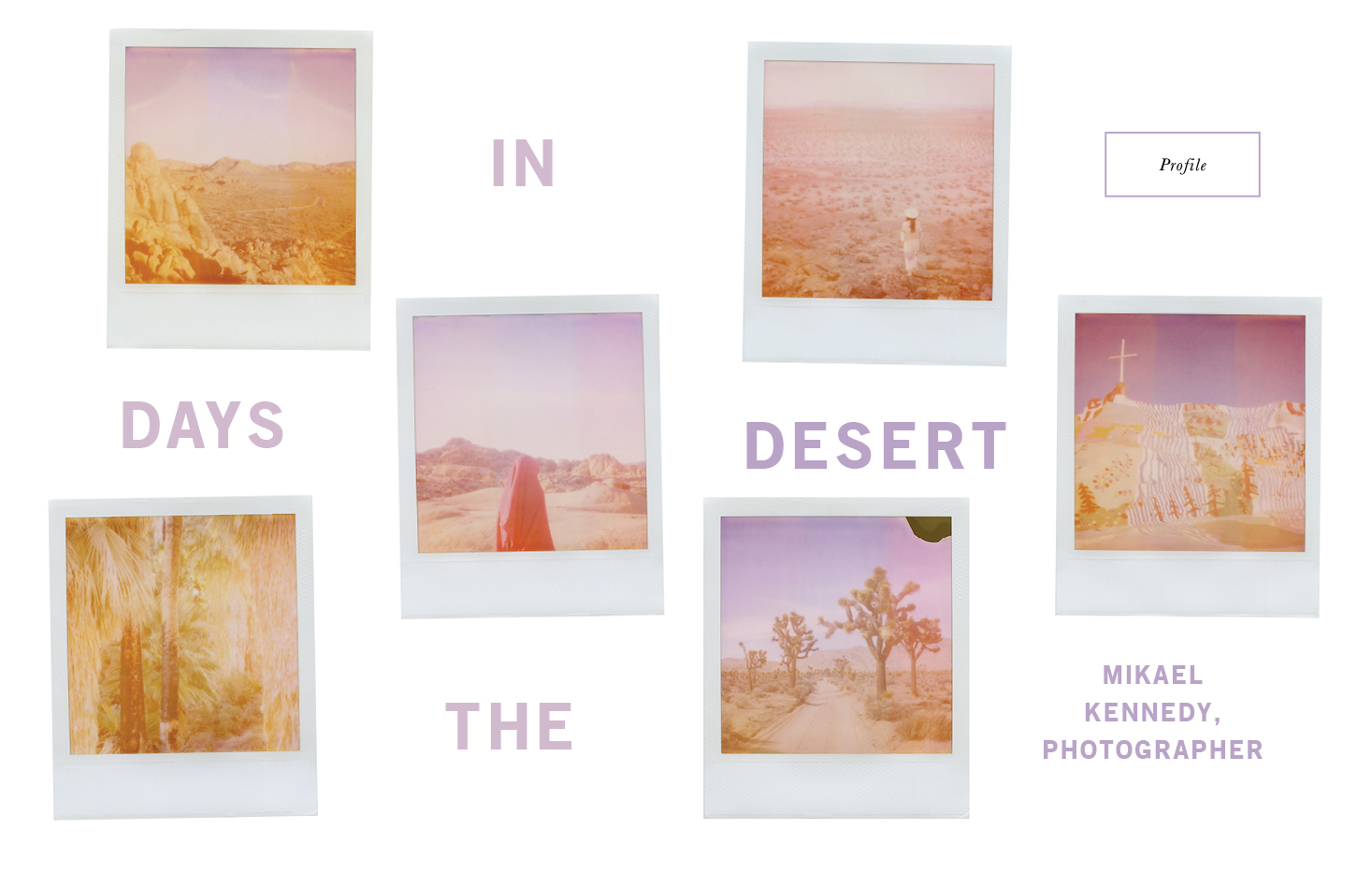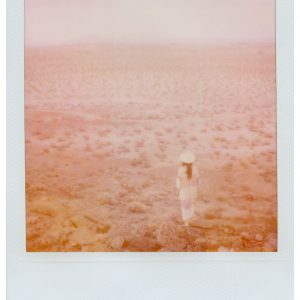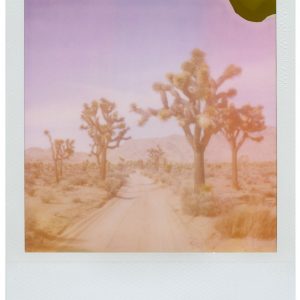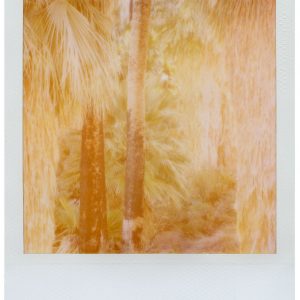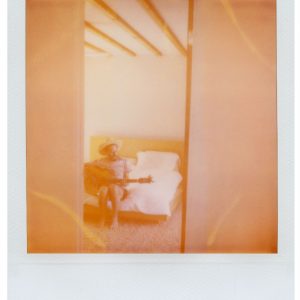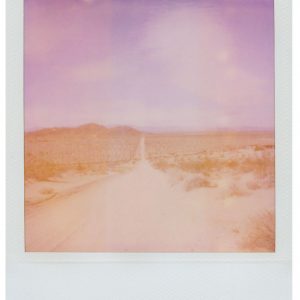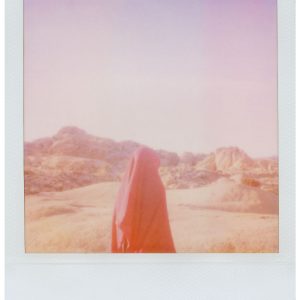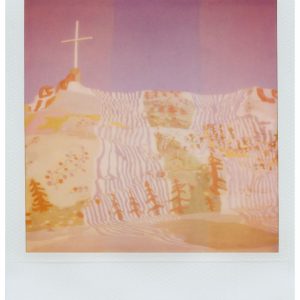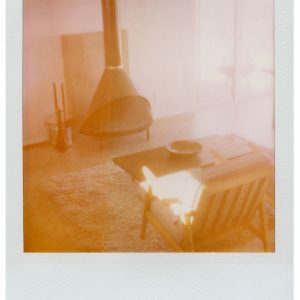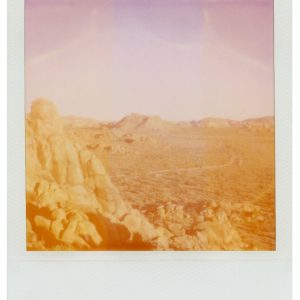Polaroid film seems made for the desert, for all that light, golden and worn. But don’t expect Mikael Kennedy to wax poetic about his work. “I spent 28 days in the desert, this is what happened, and this is what it looked like,” Kennedy says of Days in the Desert, a collection of Polaroids made while living for a month with his wife, musician Malaena Cadiz, in the heart of Joshua Tree National Park.
Despite his matter-of-factness, the photographer can’t help but hint that the trip was as magical as it sounds.
“For 28 days we watched the sunrise and the sunset everyday.”
Like his images, Kennedy’s words have a simple grace. As with his Polaroids, distance and whim are present in every sentence. The photographer was hardly out of place in the mythical desert landscape.
“We knew we didn’t want to spend another full winter in New York,” Kennedy says. “For years we’d been talking about how awesome it would be to move somewhere completely different from where we live. We joked about getting jobs at a diner in a little town.”
They didn’t quite go as far as setting up shop in an obscure zip code, but last February the couple found a house to rent for a month and decamped to the desert.
“We just worked on art, fucked around.” Kennedy says. “We’d get up every morning, have our coffee. While my wife was recording, I’d drive around, shoot Polaroids and explore.”
Exploration has always been the heart of Kennedy’s work and while his career has flourished in a variety of mediums, the Polaroid has been central to his work. The relationship started when he found an SX-70 at a thrift shop in 1999, around the time he began to travel the U.S. extensively, collecting moments. The lifestyle of the road fueled Kennedy’s favor for the instant camera.
“Travelling so much, you couldn’t process film,” Kennedy says, “Having a camera that would take a picture and develop at the same time was part of the nomadic existence.”
Buying caches of expired Polaroid film on eBay, Kennedy amassed thousands of images. In 2005, he began posting them to a blog, Passport to Trespass, which was how many early admirers were introduced to his work.
“I started creating sequences of where I’d been, creating a visual diary that ran for six years online.”
In those six years, Kennedy began to garner attention from an impressive list of clients. He had his first gallery show in 2007, displaying 500 Polaroids inside a room at the Chelsea Hotel.
Though Days in the Desert is something of a return to his nomadic Polaroid wanderings, the photographer’s experience with these distinctive images has evolved through the years.
“The significance of the Polaroid is very different for me now than it was then,” Kennedy says. “I thought it looked really cool. It was merely aesthetic. It was self-contained and beautiful.”
As he began to exhibit his Polaroids and sell the originals, his attachment to their sentiments matured as well.
“It became really important to me that they were one of a kind, almost like a painting,” Kennedy says. “You even have dirt smudged on some of the images, the corners would get bent. It was really a physical representation of that moment.”
Kennedy has a wise philosophy when it comes to selling his singularly unique Polaroids. “Every time I sold a Polaroid, I was trading part of my past, but by selling it, I was buying a few days of my future,” Kennedy says. “I was parlaying my past to be able to continue forward.”
Continuing forward, Kennedy and his wife plan to leave New York and make the West Coast their permanent home with simple work and simple goals ahead of them.
“I want a front porch I can sit on and read a book. That’s my ideal day.”
This article was originally published in RANGE Magazine Issue Three.
Photos by Mikael Kennedy.
